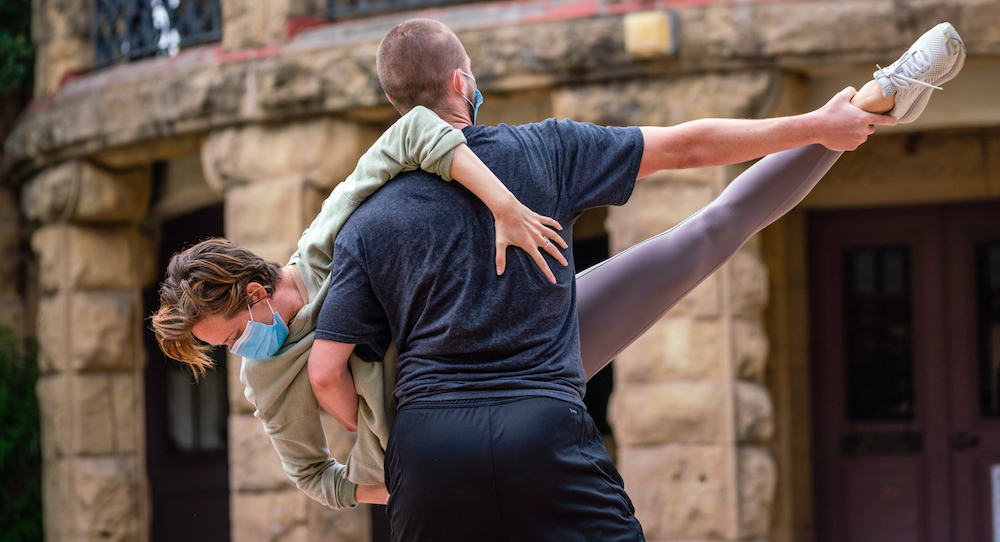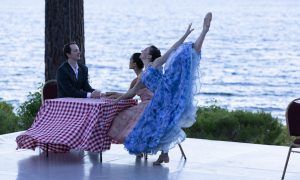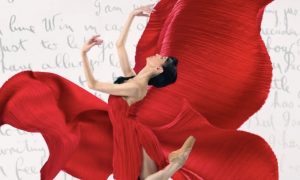The restrictions that COVID-19 has brought to the workplace have been difficult for everyone, in any field. But how do dancers, whose careers revolve around contact and physical exertion, continue to work under the new rules? Unable to work from home, dancers adopted work bubbles.
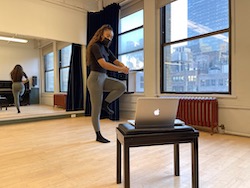
Photo by Amar Smalls.
Here, Hannah Richardson of Ailey II, Chyrstyn Fentroy of Boston Ballet, Madeline DeVries of Alonzo King LINES Ballet and Nicole Prefontaine of Canada’s National Ballet School weigh in on the pros and cons of this workplace workaround.
Usually limited to a few dancers per group, dance bubbles (or “pods”) allow companies to continue rehearsals and keep their dancers prepared for when performances become a possibility again. In the case of schools and professional programs, bubbles allow students to keep up with their training. This means that on top of dancing alongside their coworkers or peers, dancers are also limited to living and socializing within the same group. We know the dance world is already a fairly insulated space, so did this restriction have any effect on the dancers?
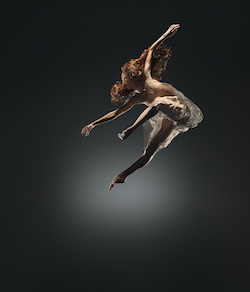
Madeline DeVries.
Photo by RJ Muna.
For tour-heavy companies like LINES, this is almost business as usual. Says dancer Madeline DeVries, “We’re very used to this, because we tour together all over the world. We’re often always together, working and living life. We’re family in that way. So there’s not much new.”
For dancers whose work and social circles don’t exist on top of each other, like Chyrstyn Fentroy of Boston Ballet, limiting her interactions to just her coworkers was difficult, at first. “Having that distance was lonely, but it opened the door for me to get to know some of my other coworkers who I hadn’t had the chance to grow closer to before. I made some new friends!”
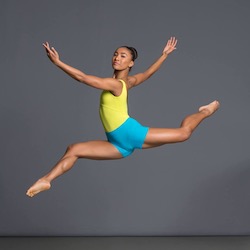
Photo by Nir Arieli.
And then there are dancers like Hannah Richardson, who’s become a pandemic pro. Richardson has worked via bubble with Parsons Dance, is currently in a pod with Ronald K. Brown’s company, Evidence, as a guest artist and will be joining Ailey II come the fall. Don’t worry – she’s quarantined between each.
Similarly to Fentroy, bubbling with Evidence has helped Richardson connect with the company dancers. Coming in as a guest artist can often leave you feeling like a bit of an outsider. But Richardson points out that seeing your co-workers outside of the studio can foster closeness. “We get the chance to learn more about one another. If we are an early bird or a night owl, who are the chefs versus who sets the table and clean the dishes (me), learning about one another’s families, past experiences, future goals and more.”
Being so close with the company has also helped immerse her in their movement style. As a guest artist, not only does she bring her unique talents to the company, but she has to be equally skilled in matching their tempo and tone. When Richardson arrives at Ailey II (after isolating, of course), those skills will be put to use again. Pandemic pending, she may be working in another bubble.
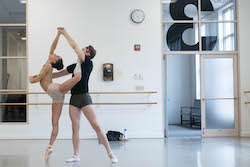
Photo by Brooke Trisolini.
Whether this is a new social set-up or life as always, connecting with people outside of the dance world is important, too. Says DeVries, “At times, it’s difficult to be away from my friends and community in San Francisco. Getting that outside perspective is very important for me to balance it all when we’re in such a heavy work environment.”
So what about life inside the studio? For dancers who work together every day, the creative process can’t be all that different, can it?
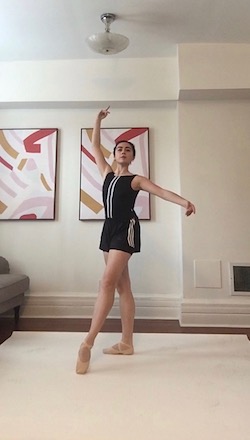
For Nicole Prefontaine, a student with the National Ballet School of Canada, there are a few key differences. The students have been divided into bubbles of six, with a teacher assigned to each. While this establishes consistency, Prefontaine notes,“Having the same person doesn’t quite allow for new feedback and corrections from class to class. A fresh set of eyes can be helpful.” She’s also felt disconnected from the rest of the school, and misses the larger sense of artistic community.
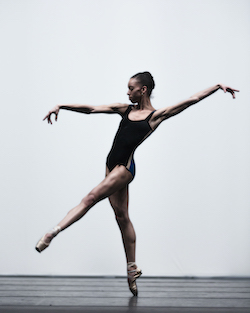
Photo by Angela Sterling.
While Prefontaine has been working intensively with one person at the front of the room, Fentroy’s been working with many. Boston Ballet has been making full use of Zoom, as well as the company’s ample studio space. “Each room has a big TV with a camera attached, and we were running rehearsals in multiple rooms at the same time that way, so we were able to continue to practice versatility thanks to that!”
And even that set-up has its setbacks. Fentroy says that there’s this “weird feeling of being incredibly exposed and also incredibly hidden at the same time. Exposed because the room is sometimes so empty, and hidden because often times, it’s just you and a TV screen with no one at the front of the room.”
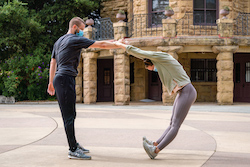
Madeline DeVries
and Robb Beresford.
Photo by Steve Disenhof.
In big companies and schools like Boston and the National, dividing into smaller sections is necessary for safety’s sake. And the workarounds work, however well. But companies with fewer dancers like LINES and Evidence can get away with sticking together: an unexpected perk of staying small.
Companies across the concert dance world have figured out various ways to make their bubbles work, keeping their dancers safe while keeping them employed. Those are objectively good things. Other pros include more space in company class, says Fentroy, and the opportunity to create in a hyper-focused environment, says DeVries, to have made something in this pandemic. Both DeVries and Richardson put quarantine periods and multiple COVID tests firmly in the con category, but both agree it’s well worth it.
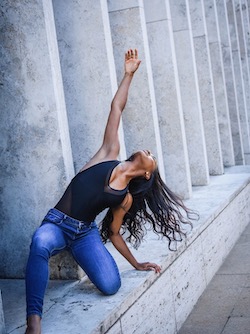
Photo by Sai Napat Rodboon.
Richardson notes the easing of anxiety about being less than six feet from someone — something we can all look forward to. Working in contained, controlled bubbles has allowed dancers to go back to exploring one of dance’s core concepts, something we’d thought had been revoked indefinitely: contact.
By Holly LaRoche of Dance Informa.


